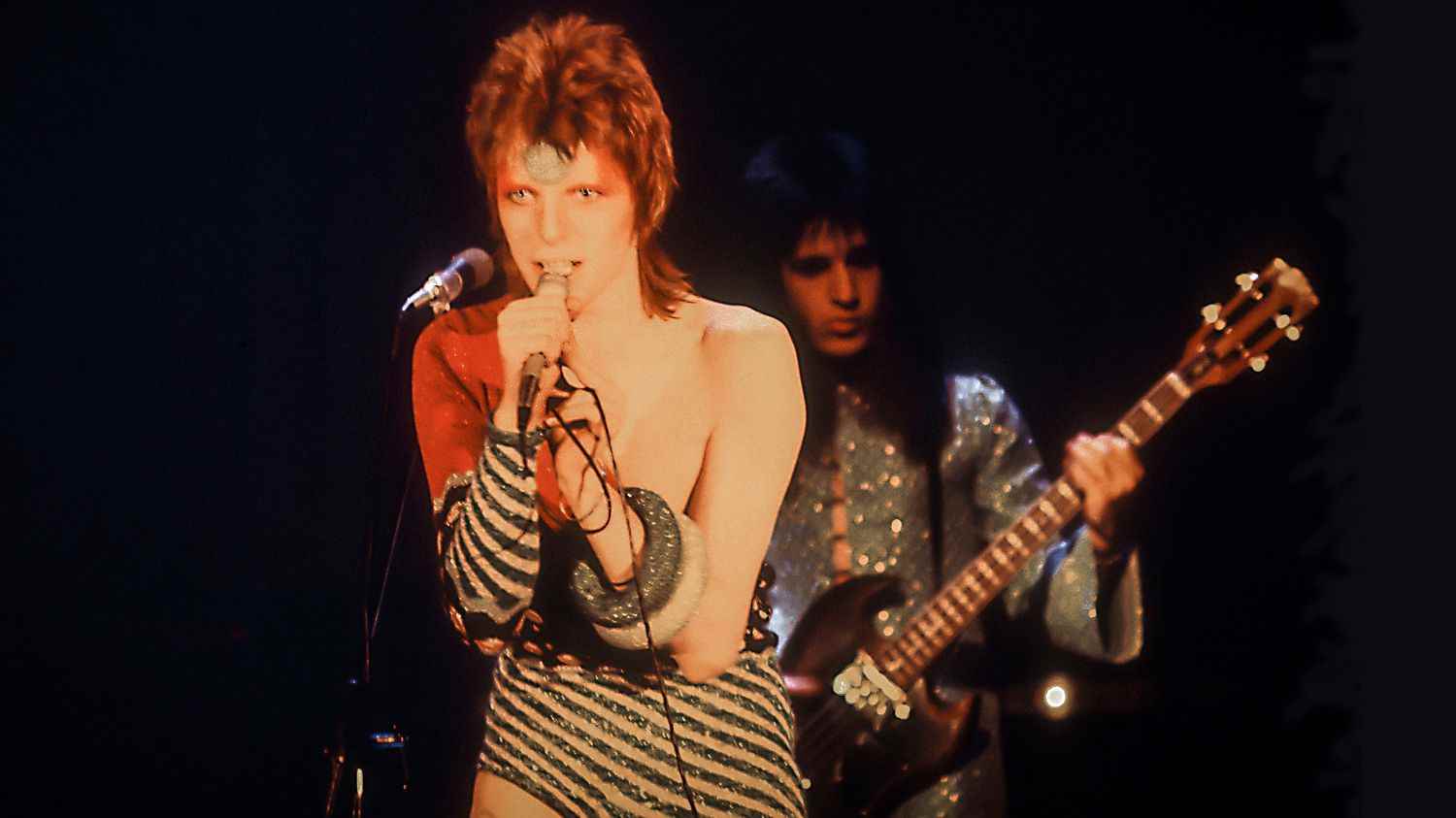Of all the characters that David Bowie has invented and embodied over time, Ziggy Stardust, created fifty years ago, is undoubtedly the one who has made the most lasting impression.
Ziggy Stardust was officially born on April 28, 1972, when the single was released. Starman/Suffragette Cityas a prelude to the album which was released on June 16 of the same year under an extended title The Rise and Fall of Ziggy Stardust and The Spiders From Mars. An accessible album, archetypal of glam rock, which highlights the riffs of guitarist Mark Ronson, and remains today a nice concentrate of hits, Starman in Suffragette City, Ziggy Stardust Where Rock’n’Roll Suicide.
This alter-ego, which finally made him gain notoriety after years of trying to break through without lasting success, is spectacular. Bowie dyes his hair orange, wears makeup, and sports futuristic and androgynous skintight outfits, unheard of at the time. Fascinated for a long time by science fiction and space travel (already discussed on his single Space Oddity), Bowie presents this double of himself as an alien rock star who has come to Earth with a message of hope, because humanity has only five years to live.
As if this theatrics weren’t enough, he threw the genre in a very avant-garde way by claiming in the music press at the same time that he was “gay”, while living with his wife Angie and their child. . The singer “frequents night spots associated with gay culture, without being fundamentally gay himself, he likes the imagery“, assures Jérôme Soligny, author of David BowieRainbow Mana reference work published in two volumes by Gallimard.
To refine his plan, David Bowie has developed with his musicians, renamed the Spiders from Mars (the Spiders of Mars), a real show inspired by mime and kabuki, rather than a simple concert. He spends months creating the outfits and the image of this group with which he wants to surpass Marc Bolan and Alice Cooper. Jackpot. The media are interested in him, without managing to identify him, maintaining his mysterious aura.
The artist imposes himself in the media as a star when he is not yet. Ziggy’s first concerts in the suburbs of London did not attract crowds. His performance on BBC’s Top of The Pops in July 1972 (above) changed everything: he played Starman and electrifies millions of British viewers, especially young people. From then on, it will symbolize modernity. His album explodes.
Bowie is the object of such adulation that the lines blur between Bowie and Ziggy. Everyone treats him like he’s the powerful alien character he created. He’s going to put a drastic end to it.
In the summer of 1973, in the London hall of the Hammersmith Odeon, while director DA Pennebaker’s cameras were filming the concert, the last of a triumphant international tour, Bowie symbolically killed his character: he announced that it was of Ziggy Stardust’s last show, as announced Rock’n’Roll Suicidethe last title of the album.
The fans are devastated: they fear they will never see their idol again. Ziggy will still take a while before “dying”, since Bowie keeps the hairstyle and the accoutrements on the next two albums, Aladdin Sane (1973), with his famous flash on the face, then Pin-Ups (1973), a cover album recorded at Château d’Hérouville near Paris. It’s with Diamond Dogs (1974), where only the mane of fire still remains on the cover, which Bowie definitively breaks with Ziggy Stardust. Now he is Bowie, soon to be considered “rock’s chameleon“.
On the occasion of the 50th anniversary of this cult album, Parlophone publishes a limited vinyl edition remastered in half speed and picture disc from the original masters of The Rise and Fall Of Ziggy Stardust And The Spiders From Mars. The picture disc is accompanied by a reproduction of the promotional poster announcing the album.

